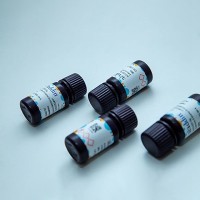Multiplex PCR: Critical Parameters and Step-by-Step Protocol
互联网
O. Henegariu, N.A. Heerema,S.R. Dlouhy, G.H. Vance and P.H. Vogt1 Indiana University, Indianapolis,IN, USA and 1Heidelberg University, Heidelberg, Germany
ABSTRACT
By simultaneously amplifying more than one locus in the same reaction, multiplex PCR is becoming a rapid and convenient screening assay in both the clinical and the research laboratory. While numerous papers and manuals discuss in detail conditions influencing the quality of PCR in general, relatively little has been published about the important experimental factors and the common difficulties frequently encountered with multiplex PCR. We have examined various conditions of the multiplex PCR, using a large number of primer pairs. Especially important for a successful multiplex PCR assay are the relative concentrations of the primers at the various loci, the concentration of the PCR buffer, the cycling temperatures and the balance between the magnesium chloride and deoxynucleotide concentrations. Based on our experience, we propose a protocol for developing a multiplex PCR assay and suggest ways to overcome commonly encountered problems.
INTRODUCTION
Multiplex polymerase chain reaction (PCR) is a variant of PCR in which two or more loci are simultaneously amplified in the same reaction. Since its first description in 1988 (6), this method has been successfully applied in many areas of DNA testing, including analyses of deletions (2,8), mutations (14) and polymorphisms (11), or quantitative assays (10) and reversetranscription PCR (7).
The role of various reagents in PCR has been discussed (3,9,12,13), and protocols for multiplex PCR have been described by a number of groups. However, few studies (5,15) have presented an extensive discussion of some of the factors (e.g., primer concentration, cycling profile) that can influence the results of multiplex analysis. In this study, over 50 loci were amplified in various combinations in multiplex PCRs using a common, KCl-containing PCR buffer. Because of specific problems associated with multiplex PCR, including uneven or lack of amplification of some loci and difficulties in reproducing some results, a study of the parameters influencing the amplification was initiated. Based on this experience, a step-by-step multiplex PCR protocol was designed (Figure 1), with practical solutions to many of the problems encountered. This protocol should be useful to those using PCR technology in both the research and the clinical laboratories.
MATERIALS AND METHODS
Standard Solutions and Reagents for the PCR
Nucleotides (dNTP) (Pharmacia Biotech [Piscataway, NJ, USA] or Boehringer Mannheim [Indianapolis, IN, USA]) were stored as a 100 mM stock solution (25 mM each dATP, dCTP, dGTP and dTTP). The standard 10´PCR buffer was made as described (Perkin-Elmer, Norwalk, CT, USA) and contained: 500 mM KCl, 100 mM Tris - HCl, pH 8.3 (at 24°C) and 15 mM MgCl2. TaqDNA Polymerase was purchased from Life Technologies (Gaithersburg, MD, USA) or from Perkin-Elmer. Dimethyl sulfoxide (DMSO), bovine serum albumin (BSA) and glycerol were purchased from Sigma Chemical (St. Louis, MO, USA). Primers were either commercially obtained (Genosys [The Woodlands, TX, USA] or Research Genetics [Huntsville, AL, USA]) or synthesized locally and were used in a final concentration of 10–25 pmol/mL each. One set of primer pairs (sY) was used to map deletions on the human Y chromosome (8,16). Another 10–15 primer pairs were for the Duchenne muscular dystrophy (DMD) gene on human chromosome X (4). Other primers represent various polymorphic loci (microsatellites) on human chromosome 12 (Research Genetics). Primers were combined in multiplex mixtures as described in Table 1 and Figures 2b, 3b and 5e. Genomic DNA was prepared using a standard sodium dodecyl sulfate ( SDS )/proteinase K protocol (Boehringer Mannheim).









